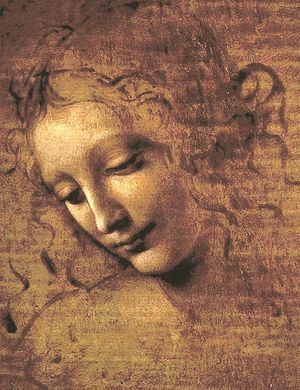Year c. 1508 Artist Leonardo da Vinci Media Oil paint Genre Portrait | Medium Oil on wood Dimensions 25 cm x 21 cm Created 1508–1508 Period High Renaissance | |
 | ||
Location Galleria nazionale di Parma Similar Leonardo da Vinci artwork, High Renaissance artwork, Portraits | ||
The Head of a Woman—also known as La Scapigliata— is a painting in oil on wood by the Italian Renaissance master Leonardo da Vinci, dating from perhaps around 1500 and housed in the Galleria Nazionale di Parma, Italy.
Contents
History
The work is a finished painting, mentioned for the first time in the House of Gonzaga collection in 1627. It was created in the art period high renaissance. It is perhaps the same work that Ippolito Calandra, in 1531, suggested to hang in the bedroom of Margaret Paleologa, wife of Federico II Gonzaga. In 1501, the marquesses wrote to Pietro Novellara asking if Leonardo could paint a Madonna for her private studiolo.
Part of the Parmesan collection since 1839, the painting has been dated to Leonardo's mature period, around the time of Virgin of the Rocks or The Virgin and Child with St Anne and St John the Baptist.
Interpretation
Alexander Nagel wrote of the painting: "The eyes do not focus on any outward object, and they give the impression that they will remain where they are: they see through the filter of an inner state, rather than receive immediate impressions from the outside world. It is the attitude of being suspended in a state of mind beyond specific thought—unaware, even, of its own body...here an inner life is suggested by a new order of pictorial effects, without recourse to action or narrative."
